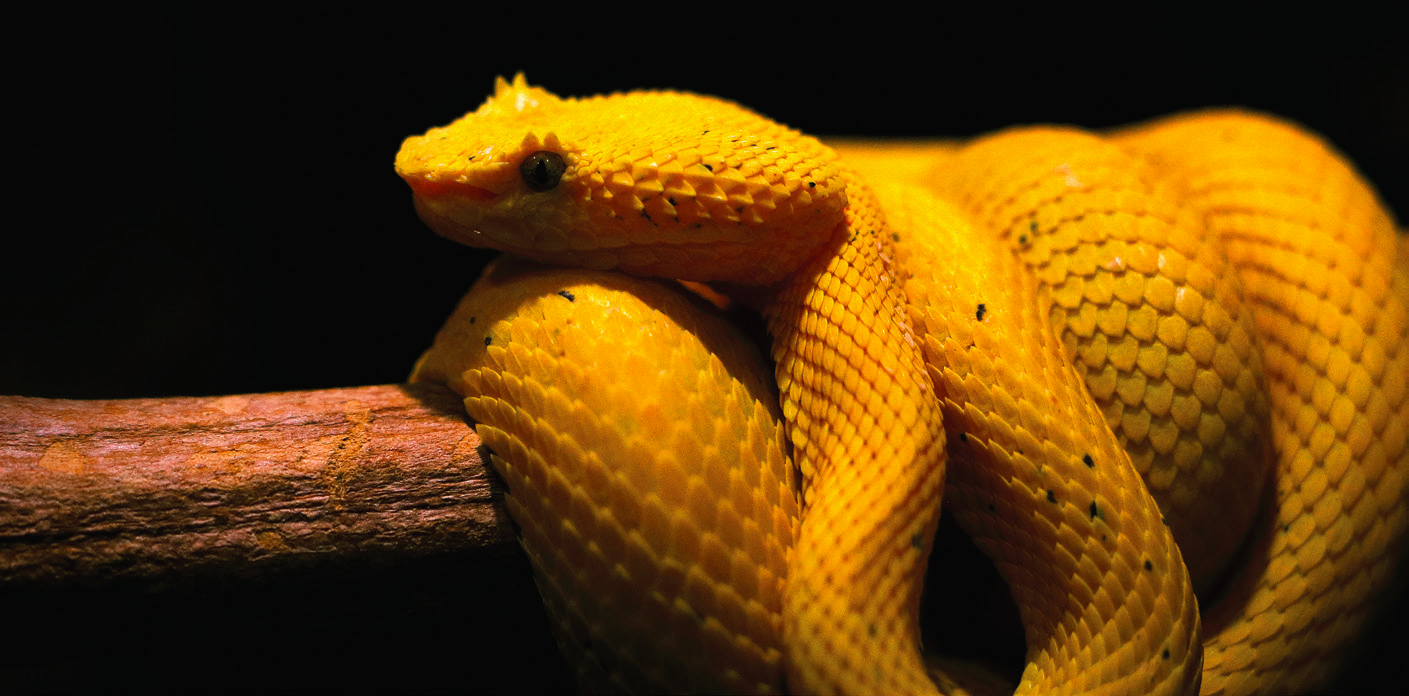Snakes and friction
R. David Whitby | TLT Worldwide July 2020
The scales on a snake create friction to propel it forward.

Friction is the major source of energy loss in snake locomotion.
I wrote about
sharks and friction in the March issue of TLT. Other animals, including snakes, also make use of their bodies when dealing with friction.
Snakes have skin entirely covered with scales (also known as scutes) of various shapes and sizes. Scales protect their bodies, aid in movement, allow the retention of moisture and aid in camouflage. Over time, the scales of some snakes have been modified to provide other functions such as “eyelash” fringes, protective covers for eyes, tail lures that help in capturing prey and the “rattle” of North American rattlesnakes. Periodically, snakes molt their scaly skins and acquire new ones. This enables the replacement of worn out skin, the removal of parasites and growth.
The scales are formed by the differentiation of the snake’s epidermis (underlying skin). Each scale has an outer and inner surface. The skin from the inner surface hinges back and forms a free area, which overlaps the base of the next scale that emerges below this scale. Young snakes hatch with a fixed number of scales. The number of scales does not change as the snake grows. The scales grow larger in size and might change shape with each moult.
Snakes have smaller scales around their mouths and sides of their bodies, which allow expansion so that a snake can consume prey of much larger size than itself. Snakes do this by dislocating their jaws to accommodate the size of the “meal” they are consuming. Scales are made of keratin, the same material as human hair and fingernails. They are cool and dry to touch.
The arrangement of snakes’ scales is important. Their colors and patterns allow taxonomic identification of each species. Except for the head, snakes have imbricate scales, overlapping like the tiles on a roof. The dorsal (or body) scales of a snake are arranged in rows along the length of their bodies. Adjacent rows are diagonally offset from each other. Most snakes have an odd number of rows across their bodies, although some species have an even number of rows. With some aquatic and marine snakes, the scales are granular, and the rows cannot be counted. The ventral (or belly) scales are large and oblong.
Because they lack limbs, the bodies of land-dwelling snakes are in contact with some surface at all times. As a result, snakes must minimize friction when moving forward but also must generate friction in order to generate enough propulsion to move. Most snakes move forward using serpentine locomotion in which the body is thrown into a series of sinuous curves. The movements appear identical to anguilliform swimming. When a snake starts to move, the entire body moves, and all parts follow the path taken by the head.
Propulsion is not by contracting waves undulating the body but by a simultaneous lateral thrust in all segments of the body in contact with solid projections. The muscular thrust against the projection is perpendicular to the axis of the pushing segment. To go forward, it is necessary for the strongest thrust to act against the side of the projection facing in the direction of movement. Other snakes use either concertina locomotion or sidewinding when there is insufficient frictional resistance along the surface for serpentine locomotion.
Snakes’ ventral scales are smooth when felt in the direction from the head to the tail but rough along their rear edges when felt in the opposite direction. It is these rear edges of the scales that act against the projections. The ventral scales grab onto tiny imperfections on surfaces and create friction to propel the snake forward. Some tree-dwelling snakes can use the edges of their ventral scales to grip branches. The smooth surfaces of the ventral scales reduce friction during movement. Friction is the major source of energy loss in snake locomotion.
Some snakes polish their scales by secreting an oily substance from their nasal passage and then rubbing the secretion all over their scales. This is done at varying intervals depending on the species of snake, sometimes frequently and other times only after molting. It is thought that scale polishing is used as a method of waterproofing, but it also might play a role in chemical messaging or friction reduction.
David Whitby is chief executive of Pathmaster Marketing Ltd. in Surrey, England. You can reach him at pathmaster.marketing@yahoo.co.uk.